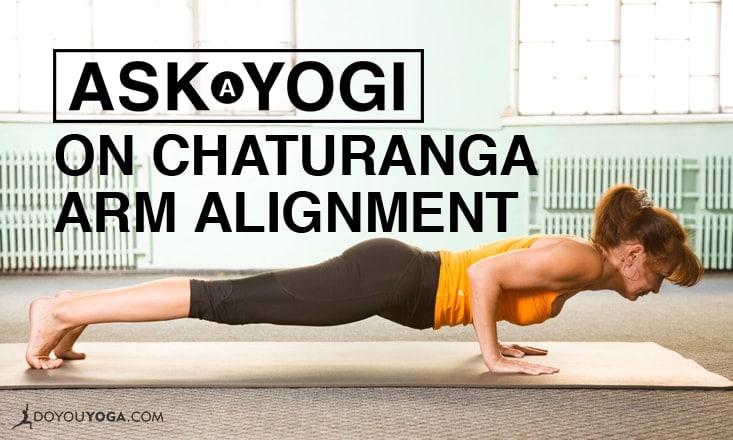Sometimes we forget that Chaturanga is an asana in and by itself. We speed through it in our vinyasas, and sometimes we don’t pause and hold the posture. We don’t breathe for more than half a breath.
Chaturanga is a staple of many yoga practices, so let’s take a deeper look on how we practice Chaturanga, particularly in terms of alignment.
"Is it okay if I can't lower to 90 degrees in Chaturanga?"
Yes, yogi! I’ll get into more detail about the “90-degrees rule” below, however, always know that there is no right and wrong in yoga. Every human will look different in each pose. There are always modifications and options to help you find the most suitable expression of the pose for you and your anatomy.
Why 90-degrees?
When lowering into Chaturanga from plank, it is not recommended to go any deeper than a 90-degree angle in the elbows. Your wrists should be directly underneath your shoulders, and your shoulders should be at the same height as your elbows.
Why? To protect the shoulder joint!
The shoulder joint is a ball and socket, so it has a full range of motion and can move in all different directions (unlike the knee or elbow for example, which are hinge joints). In fact, due to the size of the humerus head and the cavity in the shoulder blade that it fits into, the shoulder joint has the most range of motion out of any joint in the human body!
This can be fun for flailing your arms around like a crazy, inflatable, dancing human-shaped balloon (the kind outside the car dealership), BUT, it also makes the shoulder joint more susceptible to injury when it is not stabilized properly.
So, this 90-degree angle is important to protect the shoulder from excess stress. This alignment sets the yogi up for success. With the shoulder stabilized in this structure, the yogi is enabled to utilize more core and leg strength, as opposed to muscling through the movements and relying mostly on the arms.
How strict is the "90-degree arms" alignment rule in Chaturanga?
This cue was put in place to protect the yogi. However, as with all yoga poses, each yogi has their own expression. Lower up to 90 degrees, but not past.
Practice Tips and Pose Modifications
So, what to do if you are not yet able to bend or hold that low when practicing Chaturanga?
- Find your knees! Lowering to the knees takes a lot of weight off of the arms. Still, even from the knees, engage your core by tucking your tailbone, and pressing your shoulders down the back.
- Rock forward on your toes slightly. This motion will set your shoulders up so that when you lower, your elbows will be directly over your wrists.
- Step your feet out wider. Stepping your feet out will create a more stable and supportive base in the legs to take some more weight out of the arms.
- Squeeze everything! Chaturanga is a pose that requires every muscle to be working in harmony. We often think of Chaturanga as an arm-strengthening pose, however you should also be engaging your core and legs. So basically everything. When your muscles work together, it will take a lot of weight and strain out of the arms, and allow you to find a more comfortable expression of Chaturanga (didn’t think that was possible huh?)
- Wrap a strap around your biceps. Take a strap and make a loop to about shoulder width. Slip the strap around your arms, and slide it up above your elbow joint. Find your plank and then lower to your Chaturanga. The strap helps to hug the elbows in towards yours sides. But, better yet, it will also STOP you when you reach 90 degrees.
So again, yes it is 100% totally OK if your Chaturanga arms can’t create the 90-degree angle. Try out these tips, modifications, and suggestions, and find what works best for you. That’s why we call yoga a practice.
Are you struggling with Chaturanga? What are your favorite tips, modifications, and suggestions that effectively work for you every time? Share below in the comments and happy practicing!


